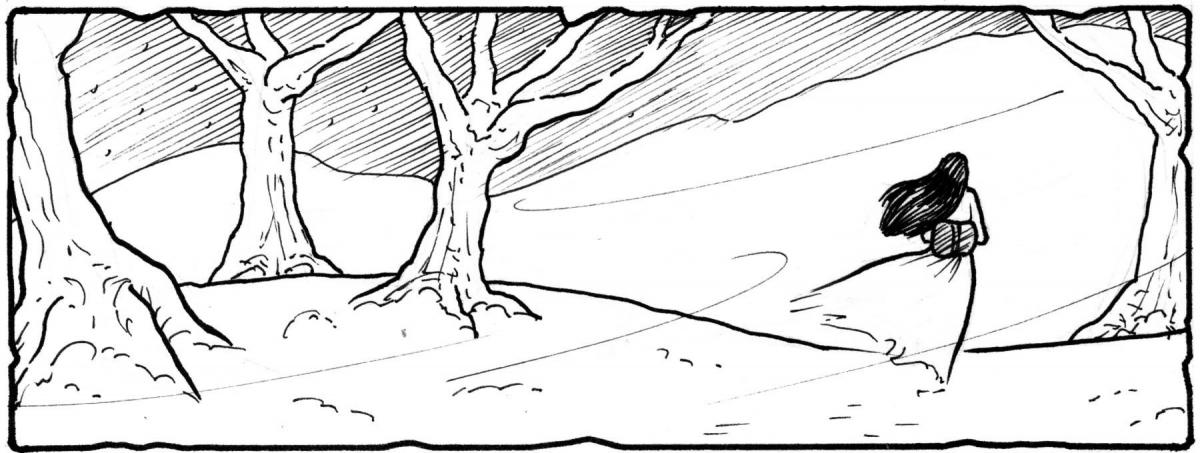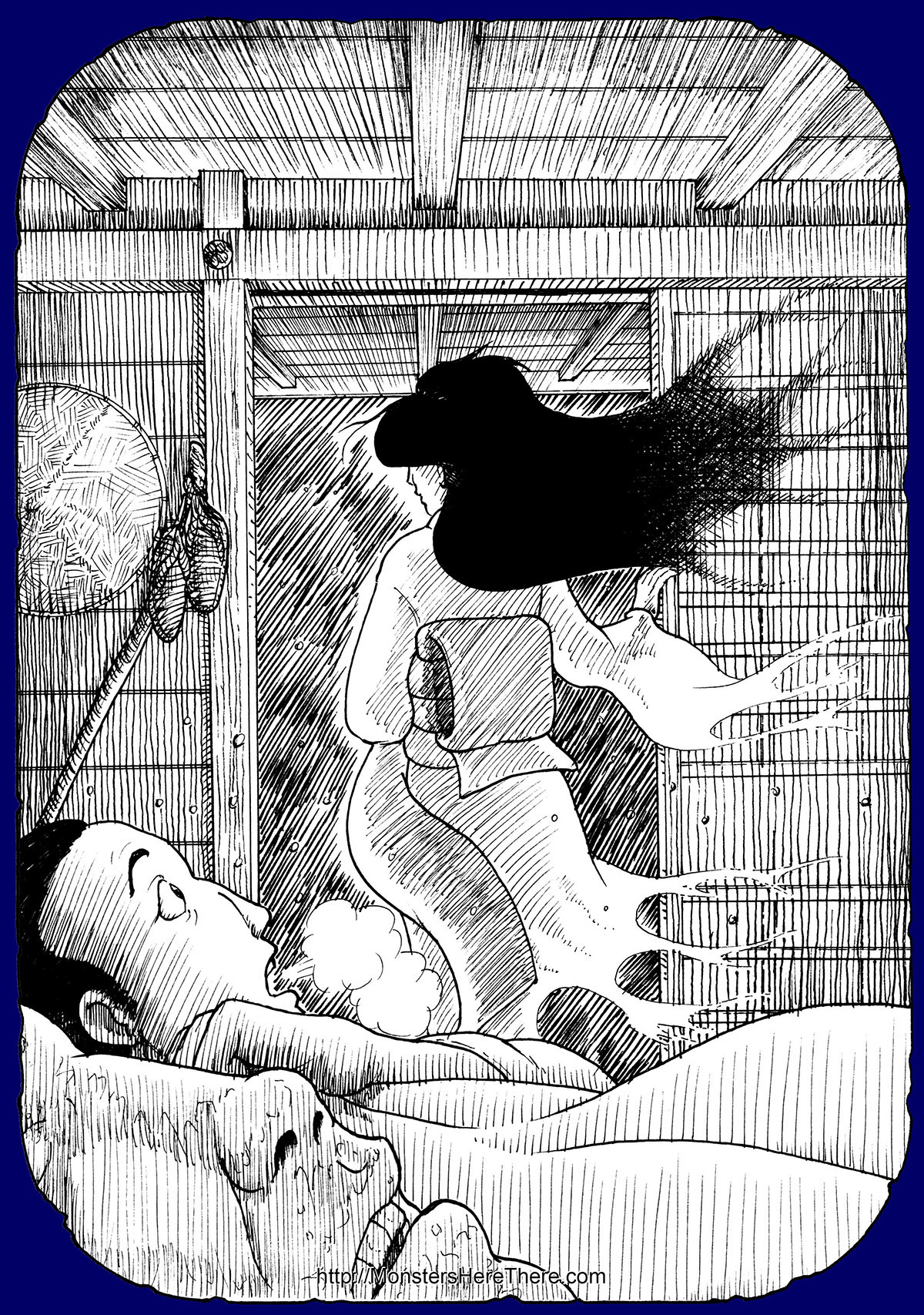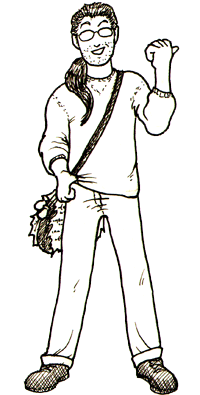| Area(s) Reported: Tokyo Prefecture, Japan
Date(s) Reported: 1700~1868 CE (?)
Yuki-Onna, whose name literally means “snow woman,” is a spirit-being in Japan that is believed to travel with the falling snow; but it’s unclear from the legend if she follows the snow, or if it follows her. She has become a stock character in Japanese television, movies, novels, comics, and games, a ghostly snow-white figure immediately recognized in Japan by both the young and the old. Oddly, the snow woman’s current fame is due to an European author named Lafcadio Hearn who, in 1904, was the first known person to publish her legend, which he had been told by a farmer in a small town in Japan. Hearn published the story in both English and Japanese... and it sold well in both languages! The tale, as Hearn told it: Long ago in Musashi province (which existed approximately where modern Tokyo Prefecture is), a young man named Minokichi and an old man named Mosaku set out together one winter’s day to cut wood. As they climbed into the mountains the weather grew steadily worse, and they soon realized they would never make it back home before dark. Luckily, they were able to take shelter in a ferryman’s tiny, empty hut. They settled in and, despite being unable to start a fire, eventually fell asleep while listening to the snowstorm outside. Minokichi woke with a start. The door of the hut was open, the storm was blowing in... and a strange woman with snow white skin was leaning over Mosaku, blowing on him with frosty white breath. She turned towards Minokichi with a stare that was hypnotic, and he found he could not move. She looked him in the face for a long time, and he was taken by how beautiful she was... but something in her eyes also frightened him deeply. Then She Spoke “Minokichi... you are very young, and handsome. I will not harm you this night. BUT: if you ever tell anyone what has happened here ― even your own mother ― I will kill you before you take another breath!” Minokichi naturally promised his absolute silence on the matter; and with that the strange woman silently rose and glided out into the storm, vanishing from sight in the snowy winds. Minokichi immediately turned to his companion... but Mosaku was dead, frozen as solid as ice. Minokichi long remembered the words of the strange woman in the snow, and spoke to no one of the incident. But time made him doubt his own memory of the event, and the threat of her words seemed to fade as he grew older. Many, many years later, now happily married to a beautiful young woman he had sheltered from a storm, Minokichi found himself once again thinking about that scary night trapped in the snow-bound hut. As his lovely wife worked quietly in the light of a floor lamp, happily fixing clothes for their ten children, Minokichi was surprised at how much she reminded him of the snow woman. Casually, he started to tell her of that night long ago. At first, he hesitated; but as the memories flooded back to him and he talked about that distant night, his wife quietly put down her work to listen, sometimes asking him to continue his story. When he finished relating the tale, his wife slowly turned to face him. 
“The only reason I will not kill you is for the sake of our children... we could have been happy, if you had just kept your word!” And with that, his wife, now ghostly white, stepped outside and vanished into the winter night, never to return. Additions and Forgotten Lore When Hearn published the tale of Yuki-Onna, it was a new story to his English audience; but, because the legend was from just one small area of Japan, it was also a new tale to most of his Japanese audience. Due to the popularity of Hearn’s book in Japan, Yuki-Onna’s tale was soon featured in plays and movies, spreading the story throughout the country, eventually leading to her current fame there. But in English speaking countries, Yuki-Onna’s story acquired some notable changes that still follow her. After the success of Hearn’s books of Japanese legends, many other authors started to publish collections of Japanese tales... as well as collections of tales meant to look like they came from Japan. In 1912, two new ideas were added to the Yuki-Onna legend by author Frederick Hadland Davis, one being another writer’s misconception of Yuki-Onna, and the other apparently Davis’ own creation. First, Davis stated that the name ‘Yuki-Onna’ was not the name of an individual being, but rather the collective name for the ghost of any female who dies in snow. He got this impression from a ghost story presented by another author, in which the name ‘Yuki-Onna’ was mistakenly translated as “snow ghost” instead of “snow woman.” But Yuki-Onna, as presented in Hearn’s tale, is far more than just a mere ghost; and, in Japan, she is distinctly thought to be a being that is entirely separate from mere ghosts. Secondly, and for no clear reason, Davis insisted that Yuki-Onna was vampiric in nature, and actually sucked blood from her victims. This is an idea that doesn’t exist in Japan at all, but is now repeated in many English language descriptions of the snow woman. 
Despite the fact that what is known about Yuki-Onna now is mainly just Hearn’s tale from 1904, illustrations of the snow woman by Japanese artists show that she was a known and recognized tale in the Tokyo area as long ago as 1737... but no known written version of her tale exists from that time. Maybe someday an ancient scroll will be found that tells the story of Yuki-Onna, and we’ll discover her legend all over again! | |













